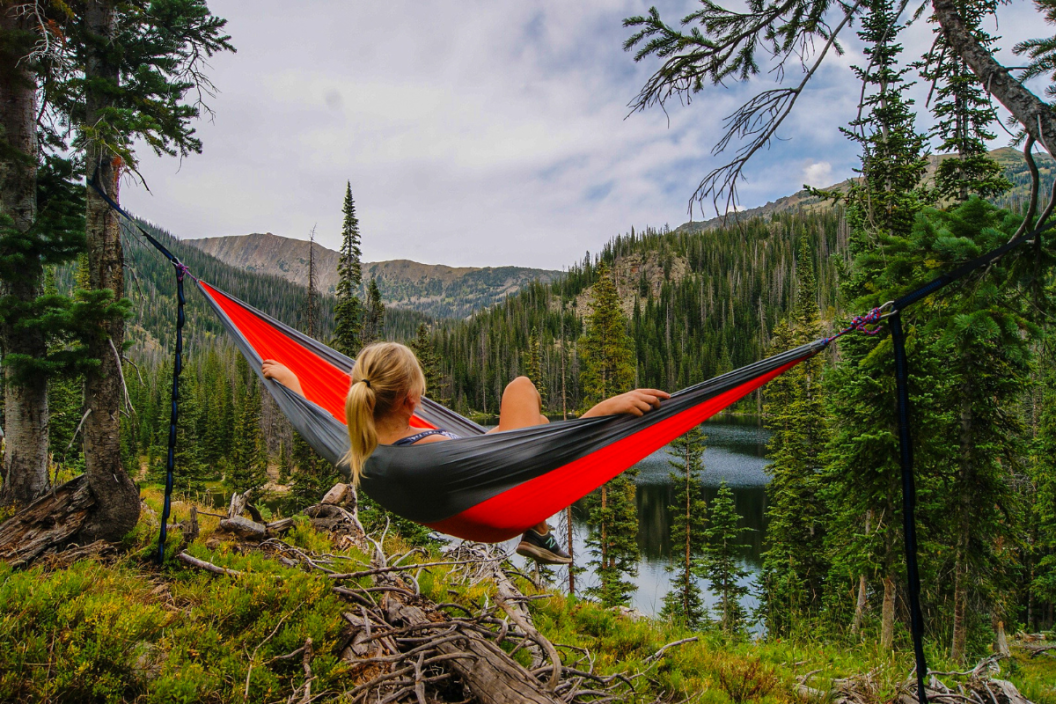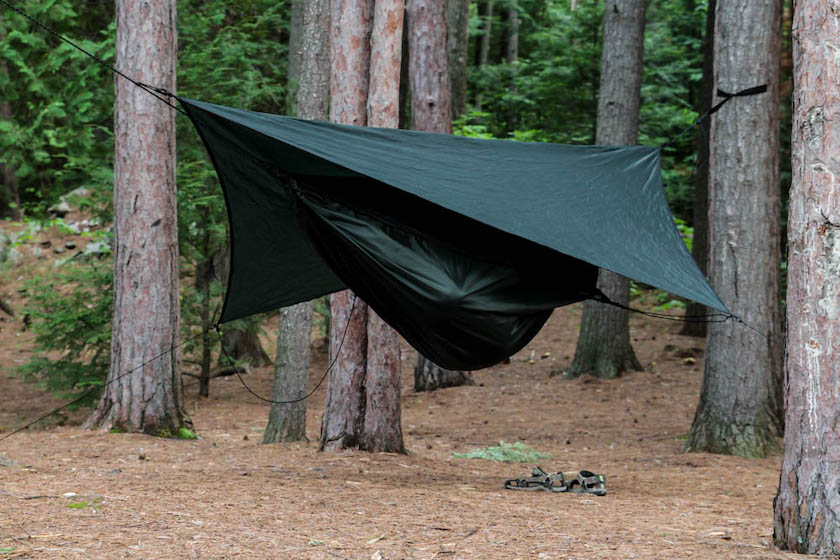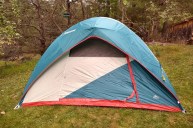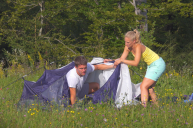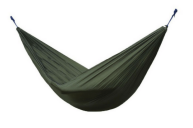If you're like me, you've dreamed about sleeping in the trees since you were little. So, it stands to reason that this camping might be the appealing new method you've been looking for to break the old routine. Hammock camping is a great way to ditch conventional camping by getting off the ground and into the trees. If you've ever enjoyed relaxing in a hammock (and who hasn't?), it might be time to give camping in one a try, especially since it's so easy. Hammock camping is also a novel idea for serious backpackers and hikers always looking for lightweight gear that takes up little space in a pack.
The finer points, like using polyester webbing straps attached to the end of the hammock's suspending ropes, take some practice. But it's not like you need to relearn how to use a hammock. My dad always said, "When in doubt, read the instructions." Plus, actual hammock tents use a cover over the top, often in the form of a hung tarp or rainfly.
You don't need a hammock tent to camp, but it significantly improves the experience. They turn your backpacking trips into camping trips for first-time users, especially since they are one of the lightest things you can carry. And remember: though hammock camping technically means sleeping in your hammock (as opposed to a tent, camper, or RV), just bringing one along and enjoying it during your trip is the best way to get acclimated. Here's a few basics you should know about hammock camping if you're interested.
Camping in Hammock Tents
If you scan the web for a short while, you will find an excellent selection of camping hammocks at reasonable prices. A one-person hammock should weigh very little (5 pounds or less) and be packable into a small container or pouch. Those are often built into the hammock's construction.
Most hammock tents come with the parts needed to hang them already included. You'll want ten or more feet of 1,500-pound test (or greater) low-stretch ropes. More often than not, the cords will have a polyester core and a polyester cover. Standard camping tents have a weight capacity of around 250 pounds. They are typically wider at one end for a person's shoulders.
Since not every hammock tent has the required suspension straps, you may have to purchase them separately. Go with straps because bare ropes will almost certainly damage the tree you use. Luckily, these strap systems make setup a breeze since no unique knots are needed. They're also adjustable so that you can hang your hammock just right.
There's one primary distinction between a camping hammock and a traditional hammock. It's the ability to zip up, fold over, or cover the user to protect them from the elements, not to mention the biting bugs that frequent camping areas during the season's prime time.
Sometimes that cover consists of a no-see-um mesh, which would allow you to see the sky on clear nights.
Setting Up a Hammock Tent
A good first rule of thumb is to check the area you intend to camp in to ensure that using the trees is legal or desirable. Standard camping restrictions still apply, such as the "leave no trace" ethic, especially if you are not camping in an established campsite.
Make sure to use sturdy trees that are more mature. Start your first tree strap at about head high. Next, figure out which side you're resting your head on. Then either go a bit higher or lower on the other side to make your final landing zone about a 30-degree angle from each side.
The ridgeline or guyline for your rainfly should run over the top of the tent. You can use a regular piece of rope since it will not carry much weight. If you need a separate bug netting, it is simple enough to detach the tent from the carabiners at one end and slide the net over the hammock.
Hammock Camping Tips
One thing you will want is some padding inside the hammock with you. Several options include a foam pad that you will need to cut to fit or a thinner version of the same air pads used in regular camping. Another option for your hammock is an underquilt accessory. The underquilt wraps around the underside of your suspended tent and can keep you warm when cold night air drifts across your backside.
Advanced users will find that an underquilt doesn't interfere with their natural sleeping position.
Campers typically mount a rainfly by a ridgeline that you tie between the same trees you hung your hammock tent on, but not every system includes one. These will have more than one attachment point to keep the rainfly from disappearing when you need it. Systems with a bug net usually have a whole zippered entry point. However, you still may find that you want to treat the base of the tent with a fabric-safe insecticide such as permethrin.
By hanging your hammock no more than 20 inches off the ground, you will find that getting in and out of it is relatively easy. The remote possibility of a fall isn't likely to lead to a severe injury. Sleeping at a slight angle is also good to prevent having your back bow uncomfortably while you sleep. Veteran hammock campers angle their body about 10-20 degrees away from the centerline after mounting the hammock so their body will be more horizontal.
Some campers prefer a small pillow, and others none at all. For those who want one, they will probably choose a pillow that is on the small side of their comfort. For owners of tents without built-in pockets, it should still be easy enough to keep a small "stuff" sack with you or hang one from the tent itself. Just be sure not to damage it by the placement of the sling.
Nothing says you can't use a sleeping bag, but some models have an oversized zipper that could damage the tent as you move inside. Remember that a good sleeping pad is one more thing you'll need to carry in your pack if you are hiking for any amount of time, but it is a simple item to have at a campground.
As stated, the suspension system that is great for the backcountry may not be appropriate for sites that are used to dealing with standard tent camping.
Hammocking, and the hammock setup, are not for everyone since it involves a bit of engineering in the woods, but you can easily use the hammock system without a lot of know-how. My dad always said, "When in doubt, read the instructions."
Now your backpacking trips can double as camping trips for first-time users, especially since they are one of the lightest things you can carry. These easily adjustable cocoons are rated with ripstop fabric and are designed to withstand everything from tree bark to toenails. Don't be afraid to use them the way they were intended.
Are you looking for a little more or even hot lunch for your hunting blind? Follow my webpage or on Facebook and YouTube.
